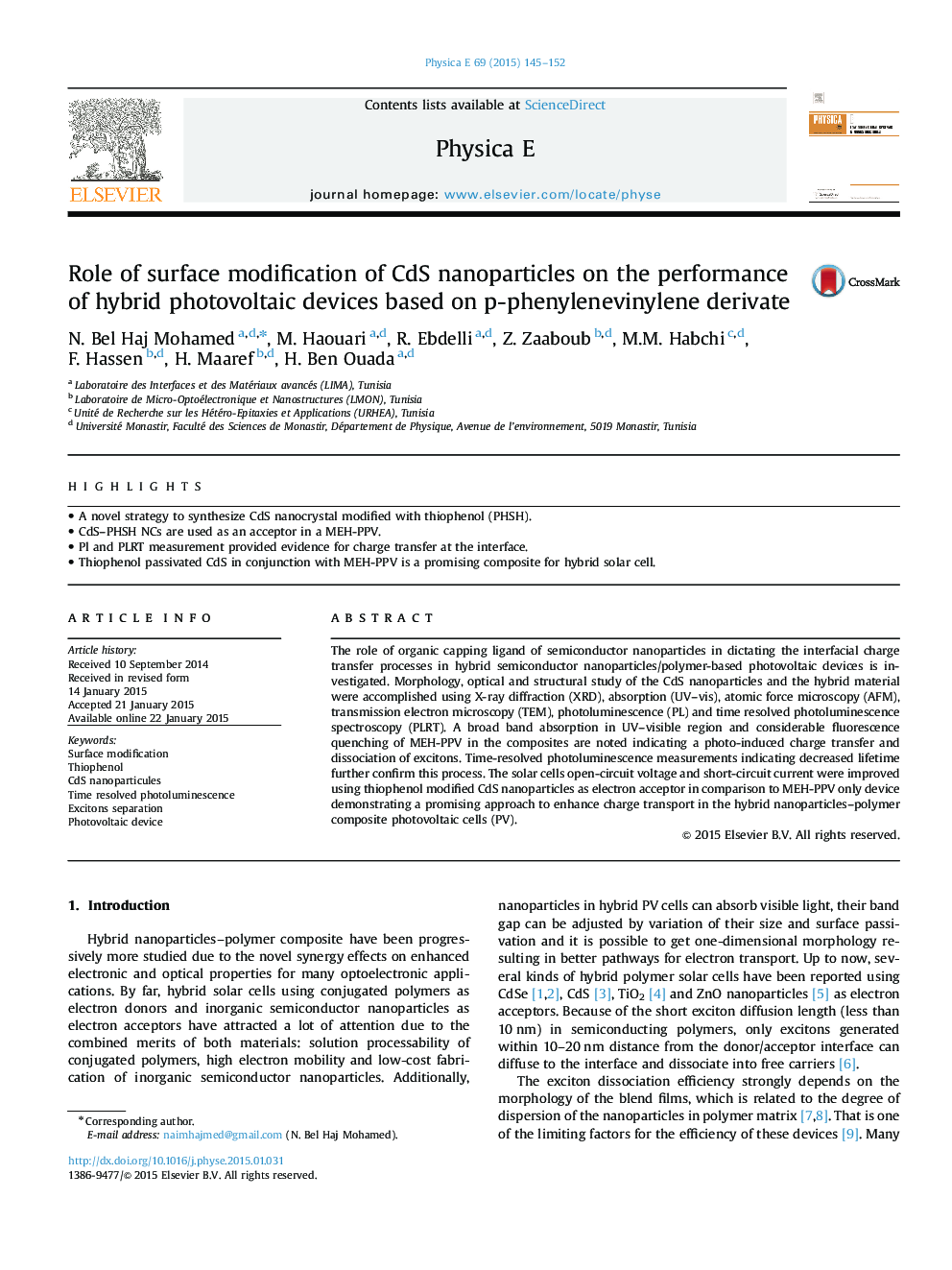| Article ID | Journal | Published Year | Pages | File Type |
|---|---|---|---|---|
| 1544190 | Physica E: Low-dimensional Systems and Nanostructures | 2015 | 8 Pages |
•A novel strategy to synthesize CdS nanocrystal modified with thiophenol (PHSH).•CdS–PHSH NCs are used as an acceptor in a MEH-PPV.•Pl and PLRT measurement provided evidence for charge transfer at the interface.•Thiophenol passivated CdS in conjunction with MEH-PPV is a promising composite for hybrid solar cell.
The role of organic capping ligand of semiconductor nanoparticles in dictating the interfacial charge transfer processes in hybrid semiconductor nanoparticles/polymer-based photovoltaic devices is investigated. Morphology, optical and structural study of the CdS nanoparticles and the hybrid material were accomplished using X-ray diffraction (XRD), absorption (UV–vis), atomic force microscopy (AFM), transmission electron microscopy (TEM), photoluminescence (PL) and time resolved photoluminescence spectroscopy (PLRT). A broad band absorption in UV–visible region and considerable fluorescence quenching of MEH-PPV in the composites are noted indicating a photo-induced charge transfer and dissociation of excitons. Time-resolved photoluminescence measurements indicating decreased lifetime further confirm this process. The solar cells open-circuit voltage and short-circuit current were improved using thiophenol modified CdS nanoparticles as electron acceptor in comparison to MEH-PPV only device demonstrating a promising approach to enhance charge transport in the hybrid nanoparticles–polymer composite photovoltaic cells (PV).
